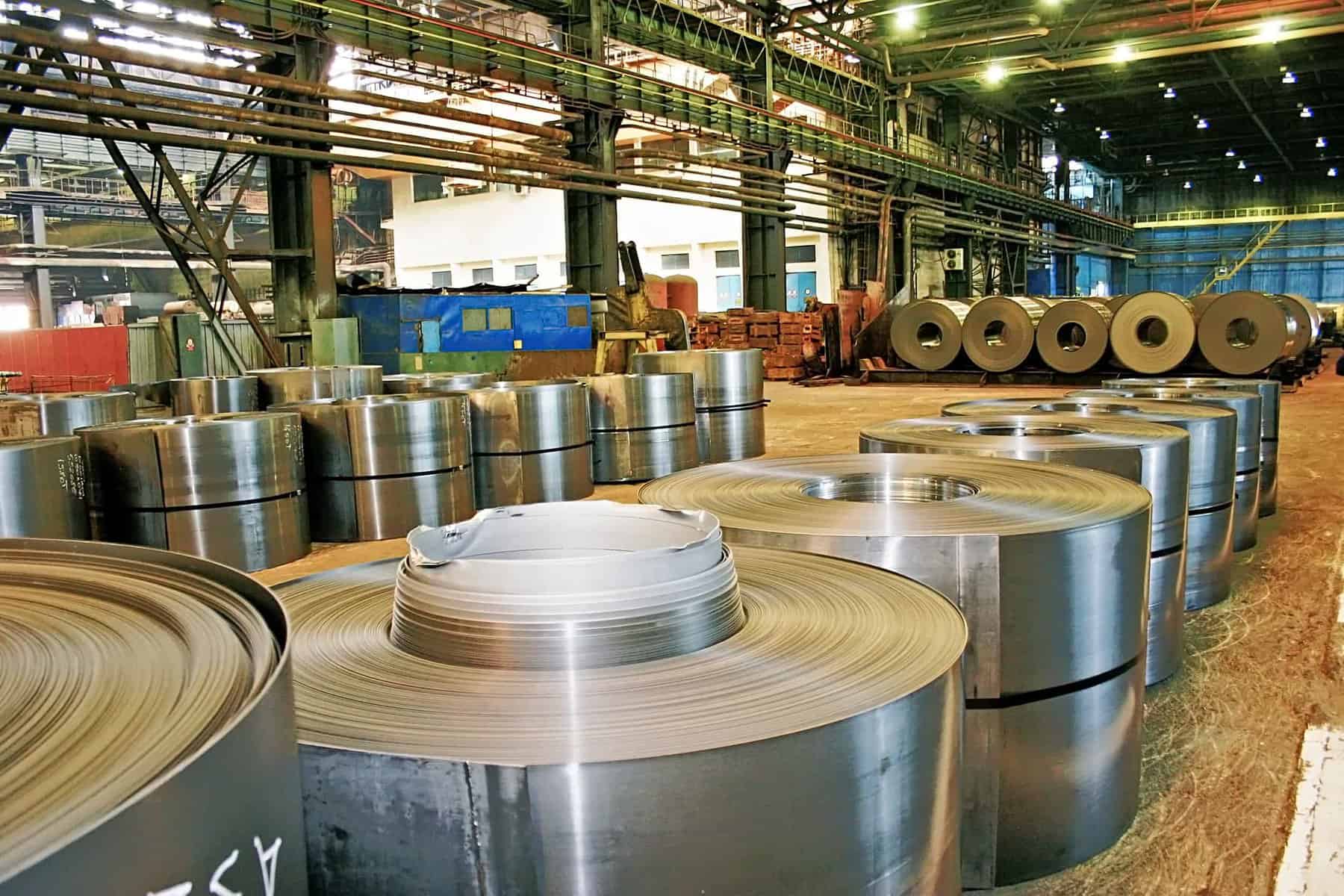
Let’s say you are in need of a flat rolled carbon steel product to create a certain component to finish a machine, there are a variety of applications needed to be done before you can receive your finished product.
There are two different types of flat-rolling techniques used in the metal fabrication process–hot and cold. We have compiled a list of the differences between each in order to help metal manufacturers get the desired finish needed for a project.
Hot Rolled:
This means that the sheets of high-carbon steel or stainless steel were processed into a coil at a temperature of 1700 degrees Fahrenheit, often called the recrystallization temperature. This is done that way to make the type of metal more malleable and easier to roll into a coil.
This process is done with the use of a large heated rectangular billet that is to be flattened into a large roll. It is kept at a hot temperature and the hot steel is run through compression rollers to create the flat-rolled sheet. It is then wrapped into a coil and left to cool.
Out of the two choices, this is considered the cheaper alternative to rolling techniques as it requires less processing than cold-rolled metal.
Holl-rolled sheet metal are not necessarily used for projects that require precise designs and dimensions as the steel does shrink and scale while cooling. Most projects that would utilize this process for their final product are industries like construction that require beams and poles.
To prevent corrosion and prolong the longevity of the final product, many hot-rolled items are pickled and oiled as a surface finish. The pickling process is not difficult, it consists of bathing the oil in an acid to “pickle” it and a dried oil is applied to prevent rusting.
Hot rolled pickled and oil (HRPO) steel is a form of hot-rolled steel without the scale and the pickling process removes it, thus making the final product more desirable and corrosion resistant.
Cold Rolled:
Compared to hot rolled steel, cold rolled products are processed similarly but with an added step to achieve more exact dimensions. After the steel cools down to room temperature, it is run through the rolling process again to modify the surface area.
The cold rolled sheets are better for projects that require smoother surfaces, well-defined edges and corners in the manufacturing process. The only downside is that there is more pressure required as the material itself is not as malleable as when heated.
Cold rolled sheets are used to make domestic appliances and other products that require precision. Some cold rolled sheets are also coated in various finishes to help enhance the anti-corrosion properties of steel.
Which One Works Best For Your Project
Depending on what you are trying to build and the end goal of the designated product, different types of flat rolled steel products have their own benefits. American Douglas Metals (ADM) has extensive aluminum, carbon and steel products ready to be flat-rolled into the product you need for any project.
Our extensive stock is available in the following formats:
- Cold Rolled
- Galvanized
- Galvannealed
- Galvalume
- Acrylume
- Painted
- Embossed
- Hot Rolled Pickled and Oiled
As a full-service carbon and stainless steel products supplier and service center, ADM offers quality and reliability to exceed the needs of diverse industrial and manufacturing applications across the globe.
